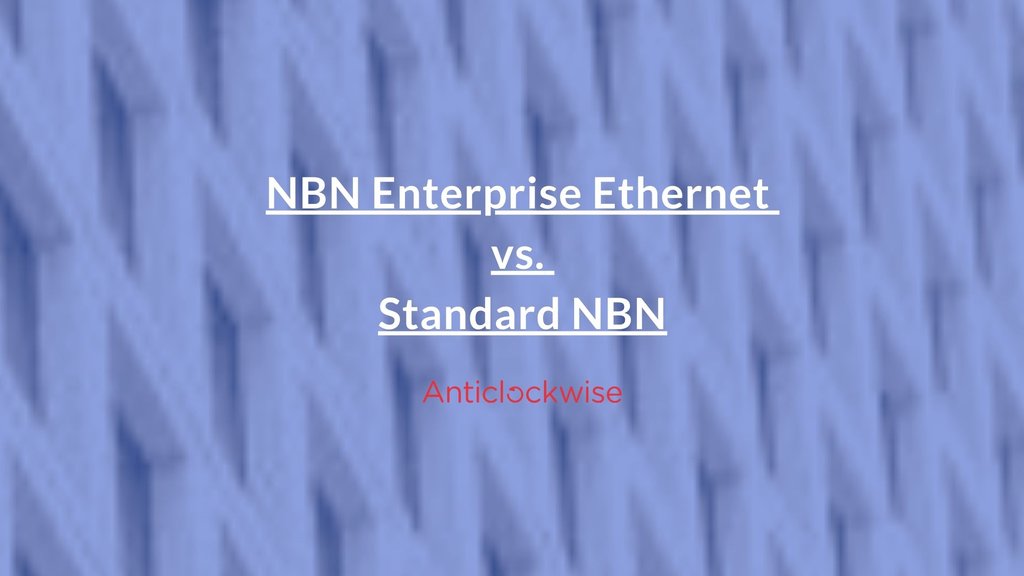
NBN Enterprise Ethernet vs. Standard NBN: Which is Right for Your Business?
Australian enterprises have now to make the tough choice of selecting either NBN regular (the National Broadband Network) and NBN Enterprise Ethernet. Each of these offers advantages that would suit varied operations but getting through their differences is a whole other thing. However, businesses that understand what these two services differ in will come up with sound decisions suitable for their connection needs and operational goals.
Understanding the Core Differences Between NBN Options
Technology and Infrastructure
The actual difference underlying normal NBN to NBN Enterprise Ethernet is their technology: in very simple words, infrastructure. Normal NBN uses quite a number of technologies, for example, fibre-to-the-premises (FTTP), fibre-to-the-building (FTTB), fibre-to-the-curb (FTTC), hybrid fibre-coaxial (HFC), fixed wireless and satellite. These technologies tend to have a common infrastructure, such as traditional copper lines, which sometimes affect speed and reliability.
On the contrary, NBN Enterprise Ethernet is using a private point-to-point fibre connection into the business commercial premises. So, there is no competition for bandwidth with customers, which brings tremendous speed and more reliability. Due to its exclusivity, Enterprise Ethernet can offer a smoother internet experience while easing latency and improving its performance.
- Enterprise Ethernet stands unmatched for reliability, and with minimum interference, that's why it is the best choice for enterprises that seek stable connection with high speed.
- The Standard NBN is adequate for the needs of a general user; however, it is prone to inconsistency in both speed and performance at peak hours.
Speed and Bandwidth Capabilities
Speed and capacity are significant criteria for selecting the perfect internet package for a company. NBN Enterprise Ethernet offers symmetrical upload and download speeds from 100 Mbps to 1 Gbps, which will guarantee consistent performance of data-heavy applications, especially when adopting cloud services- video conferencing, or transferring large files-from the business.
On the contrary, Standard NBN offers asymmetrical speeds. There are maximum download rates of up to 1000 Mbps, and upload speeds may go up to no more than 400 Mbps. Therefore, these would hamper activities that require high upload capability like sharing large files or running live applications.
For enterprises that rely on flawless cloud interactions or real-time collaboration solutions, Enterprise Ethernet assures smooth operations and eliminates irritating bottlenecks.
Evaluating Business Needs and Requirements
Critical Business Applications and Data Usage
Every business has its own level of required connectivity. When faced with connectivity choices between Enterprise Ethernet and a normal NBN connection, an enterprise should always keep in mind its applications and usage of data.
Enterprise Ethernet is the best solution for businesses that:
- Use cloud-based solutions, like CRMs and accounting software, almost exclusively.
- Have many online consultations with clients or conferencing with far-flung teams.
- Frequently carry heavy data transfers as in media production or software development.
- Have their own servers or data centres and need regular high-bandwidth access.
Basic NBN could be more cost-effective for companies with lower data consumption or low reliance on real-time communications.
Design Your Ideal Network Today!
Get a future-proof network with our reliable and scalable data network design services.
Service Level Agreements (SLAs) and Support
Indeed, SLAs are a promising area under which Enterprise Ethernet will thrive very well. Most of these agreements largely cover uptime for companies, timeframes for business fault resolution, and proactive assistance. For example, many of Enterprise Ethernet customers have a four-hour window for problem resolution, which reduces disruption to operations.
In fact, the open NBN is more or less best-efforts: fixes may take longer, and sometimes even proactive monitoring does not happen. Which may be good enough for businesses that have no critical internet reliance, but for those whose businesses might thrive on stability and uptime, Enterprise Ethernet would be the best option.
Benefits of Enterprise Ethernet SLAs:
- Guaranteed performance compliance that minimizes risks.
- Increased speed in times of fault resolution.
- Monitor proactive networks with specialized support channels.
Cost Considerations and Budget
Cost is usually a critical determinant when considering Enterprise Ethernet and standard NBN. Though on one side Enterprise Ethernet is costly as it bridges the connectivity gap that production-inverted firms cannot afford.
Standard NBN tariffs are quite less so as an alternative for small enterprises or consumers strapped for cash. However, then again, enterprises must weigh the possible downtime costs (or suboptimal quality of service) against the high upfront costs of Enterprise Ethernet.
- Enterprise Ethernet costs more but results in a long-term profit by avoiding shutdown and improving productivity.
- Standard NBN is cost access for companies with basic internet needs.
Scalability and Future Growth
As businesses keep on expanding with time, so do their requirements for networking. In fact, Enterprise Ethernet is quite the suitable solution that allows seamless scaling into larger bandwidths, making growth possible without major infrastructural upgrades. This flexibility allows the businesses to change their internet plans as they grow with consumption of data.
Thus, usually, upgrading the regular NBN may take a lot more effort if it even enables you to change the site, with considerable alteration to its infrastructure. Besides, not all areas, therefore, cover the highest standards of NBN speed tiers that might limit future scalability.
What Scalability Would Mean:
- Enterprise Ethernet is the flexible, future-proof answer to improving business needs and scaling it for tomorrow.
- Standard NBN: The limited scalability in many sites with possible need of high costs would give the most resistance.
Simply put, both normal and NBN Enterprise Ethernet have their benefits relative to different business environments. Small end-user companies probably don't need anything more than standard NBN for basic connectivity, while larger organisations or those with heavy internet usage would need something more from NBN Enterprise Ethernet, in comparison with normal NBN, for superior performance, reliability, and service level agreements.
The right option will depend on bandwidth, uptime, support needs, and budget considerations. To guarantee you've chosen the right fit for your business, consult your most preferred NBN provider, certified partners, and experts like the Anticlockwise team. Anticlockwise offers personalised assessments and tailored recommendations for businesses. Also visit the NBN Co official website for details on the business internet solutions available in Australia.

Managing Director
